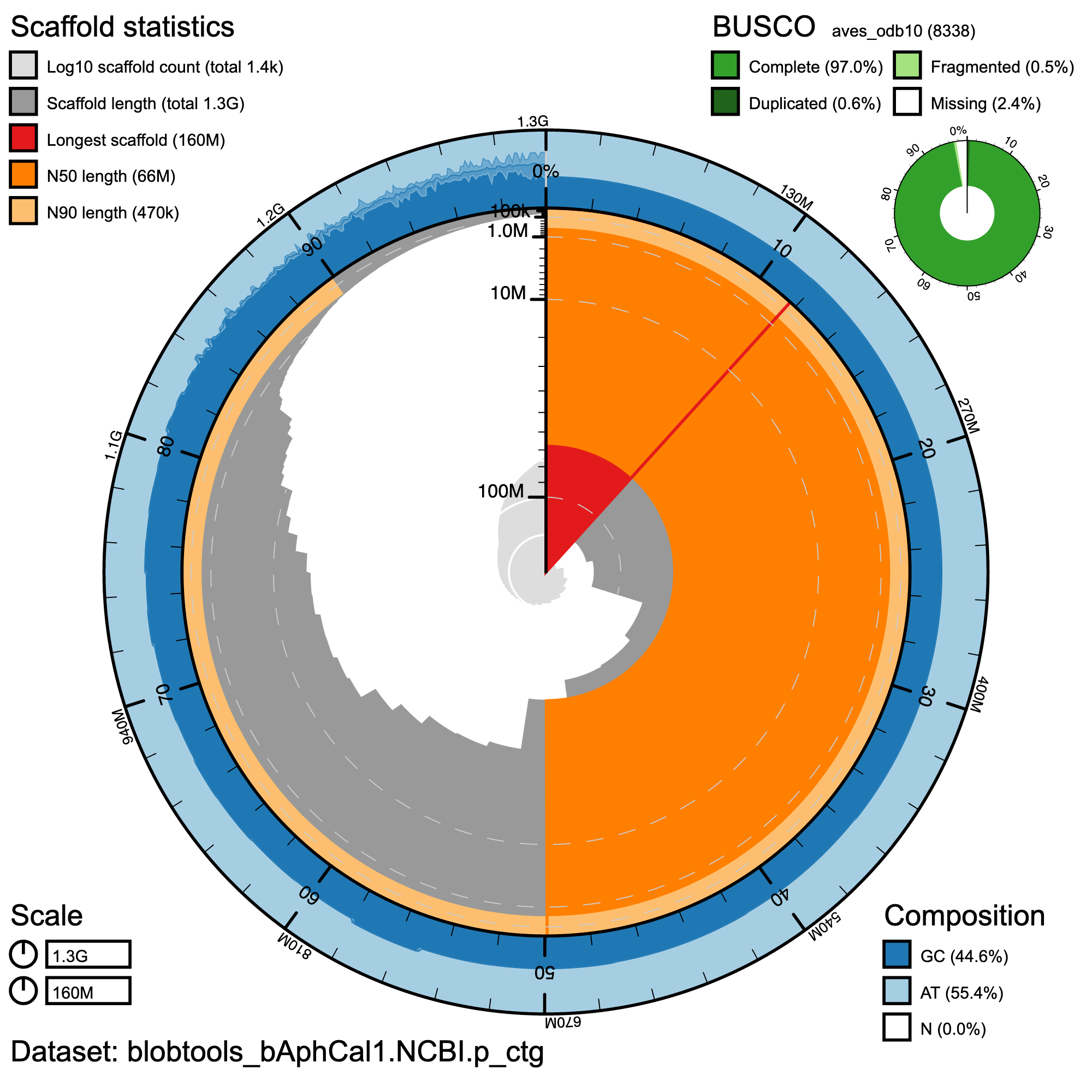Aphelocoma californica (Western Scrub Jay)
Visual overview of genome assembly metrics
K-mer spectra output generated from PacBio HiFi data without adapters using GenomeScope2.0, which indicates low (<1%) heterozygosity. The lower shoulder of the distribution corresponds to haplotype-specific K-mers (i.e. K-mers including a heterozygous site), which should have half the read depth of the taller peak, which corresponds to K-mers shared identically by both haplotypes in the diploid individual sequenced.
BlobToolKit Snail plot showing a graphical representation of the quality metrics for the Aphelocoma californica "Haplotype 1" assembly (bAphCali1.0.hap1). The plot circle represents the full size of the assembly. The red line represents the size of the longest scaffold; all other scaffolds are arranged in size-order moving clockwise around the plot and drawn in gray starting from the outside of the central plot. Dark and light orange arcs show the scaffold N50 and scaffold N90 values. The central light gray spiral shows the cumulative scaffold count with a white line at each order of magnitude. White regions in this area reflect the proportion of Ns in the assembly; the dark versus light blue area around it shows mean, maximum, and minimum GC versus AT content at 0.1% intervals (Challis et al. 2020).
Omni-C contact maps for Haplotype 1 and Haplotype 2 genome assemblies generated with PretextSnapshot. Omni-C contact maps translate proximity of genomic regions in 3D space to contiguous linear organization. Each cell in the contact map corresponds to sequencing data supporting the linkage (or join) between two genomic regions.
Authors
Devon A DeRaad, Merly Escalona, Phred M Benham, Mohan P A Marimuthu, Ruta M Sahasrabudhe, Oanh Nguyen, Noravit Chumchim, Eric Beraut, Colin W Fairbairn, William Seligmann, Rauri C K Bowie, Carla Cicero, John E McCormack, Robert K Wayne



